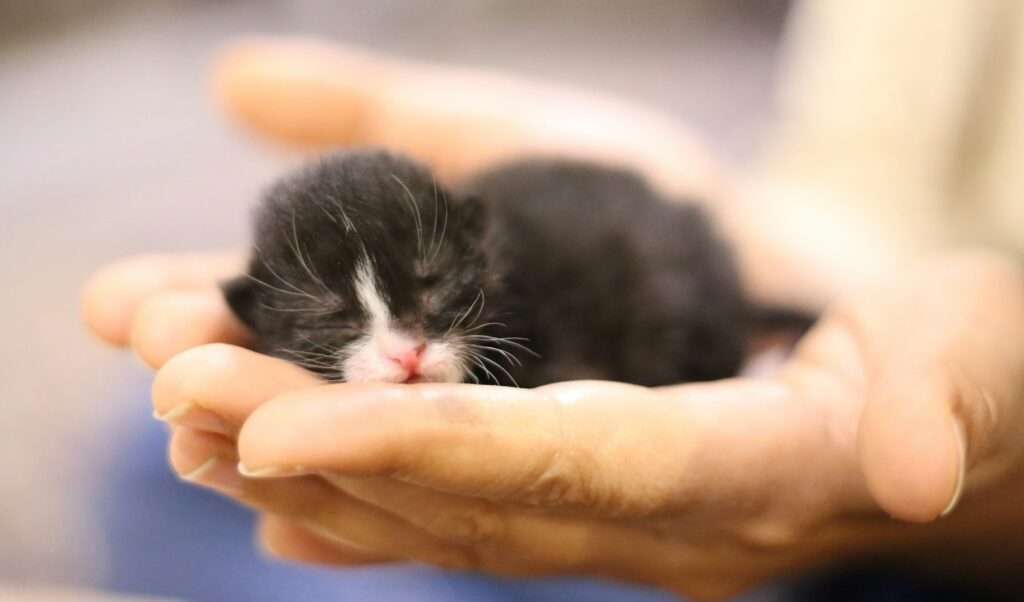How to Tell if a Kitten is a Boy or a Girl: The Ultimate Handbook!
Welcoming a new kitten into your home is an exciting and joyous occasion. Whether it’s your first feline friend or an addition to your existing fur family, the arrival of a kitten brings a sense of anticipation and wonder. As you prepare to embark on this journey of companionship and care, one of the first questions you may have is, “How do I tell if my kitten is a boy or a girl?”
In this comprehensive guide, we’ll delve into the fascinating world of feline anatomy and explore the various methods for determining the gender of a kitten. From understanding the basics of feline anatomy to practical tips for gender identification, we’ll equip you with the knowledge and confidence to decipher the mysteries of your new furry friend’s gender.
Understanding Feline Anatomy
Before we dive into the specifics of determining a kitten’s gender, let’s take a moment to explore the intricacies of feline anatomy. Like all mammals, cats exhibit distinct differences in anatomy between males and females, known as sexual dimorphism.
In male cats, or toms, the primary sexual characteristics include the presence of testicles, which are located within the scrotum. These testicles play a crucial role in the production of sperm and the secretion of male hormones, such as testosterone, which influence a tom’s behavior and physical development.
Female cats, or queens, lack external testicles and instead possess a distinct set of genitalia that includes the vagina and vulva. Additionally, female cats have a reproductive system designed for pregnancy and lactation, with ovaries that produce eggs and a uterus for carrying and nurturing kittens.
Understanding these fundamental differences in feline anatomy lays the groundwork for accurately determining the gender of a kitten. In the following sections, we’ll delve deeper into the specific characteristics that distinguish male and female kittens and provide practical guidance for identifying your new furry friend’s gender.
Identifying Male Kittens
Male kittens, or toms, possess distinct anatomical features that differentiate them from their female counterparts. The most prominent of these features is the presence of testicles, which are located within the scrotum. These testicles typically become noticeable as the kitten matures, usually around 6 to 8 weeks of age.
When visually inspecting a male kitten’s genitalia, you may observe two small, round structures located beneath the anus. These are the testicles, which vary in size and may be more prominent in some kittens than others. Additionally, male kittens often have a wider gap between the anus and the genital opening compared to female kittens.
Despite these visual cues, accurately identifying male kittens can sometimes be challenging, particularly in very young kittens or those with underdeveloped genitalia. Consulting with a veterinary professional or experienced breeder can provide valuable confirmation of gender in such cases.
Recognizing Female Kittens
Female kittens, or queens, also exhibit distinct anatomical features that set them apart from male kittens. Unlike male kittens, female kittens lack external testicles and instead possess a single genital opening located just beneath the anus. This opening serves as both the urethral and vaginal opening in female cats.
When visually inspecting a female kitten’s genitalia, you’ll notice a single, vertical slit located beneath the anus. This slit is the opening to the vagina and is typically smaller and less prominent than the genital opening in male kittens. Additionally, female kittens may have a closer proximity between the anus and the genital opening compared to male kittens.
While identifying female kittens may seem straightforward, it’s essential to note that young kittens, particularly those under 6 weeks of age, may have less developed genitalia, making gender determination more challenging. In such cases, seeking professional assistance for confirmation of gender may be necessary.
Other Methods of Gender Determination

While visual inspection of genitalia is the primary method for determining a kitten’s gender, there are alternative approaches available for those seeking additional confirmation. One such method is DNA testing, which involves collecting a small sample of the kitten’s saliva or tissue and analyzing it for genetic markers that indicate gender.
DNA testing offers a highly accurate and reliable means of determining a kitten’s gender, with results typically available within a matter of days. However, it’s important to note that DNA testing may not be necessary for most kitten owners and is often reserved for specialized situations or breeding purposes.
Another method for determining a kitten’s gender is palpation, which involves gently feeling the kitten’s abdomen to detect the presence of testicles or ovaries. This technique requires a trained professional, such as a veterinarian or experienced breeder, and is typically performed on older kittens or cats.
While these alternative methods can provide additional confirmation of a kitten’s gender, visual inspection remains the most accessible and practical approach for most owners. However, if doubts or concerns about a kitten’s gender persist, it’s crucial to seek expert guidance.
Factors to Consider in Gender Identification
When attempting to determine a kitten’s gender, several factors should be taken into consideration to ensure accuracy and reliability. One such factor is the age of the kitten, as younger kittens may have less developed genitalia that can make gender identification more challenging.
Additionally, the kitten’s development stage and overall health can impact the appearance of its genitalia, further complicating gender identification. Kittens that are sick or malnourished may exhibit delayed development or abnormalities in their genitalia, making gender determination more difficult.
Furthermore, environmental factors such as temperature and stress levels can also influence the appearance of a kitten’s genitalia. It’s essential to observe the kitten in a calm and comfortable environment to minimize stress and ensure accurate gender identification.
Overall, while determining a kitten’s gender may seem straightforward, it’s important to approach the process with patience, care, and attention to detail. By considering the various factors that can affect gender identification and seeking guidance when needed, you can confidently determine your kitten’s gender and provide the best possible care.
Practical Tips for Gender Identification
Identifying a kitten’s gender can be an exciting but sometimes challenging task for new pet owners. To help simplify the process, here are some practical tips for gender identification:
- Observe Carefully: Take the time to carefully observe the kitten’s genitalia, noting any distinguishing features such as the presence of testicles or the shape of the genital opening.
- Use Good Lighting: Ensure you have adequate lighting when inspecting the kitten’s genitalia to help you see more clearly and accurately.
- Handle Gently: Handle the kitten gently and with care when attempting to identify its gender, as excessive handling may cause stress or discomfort.
- Seek Assistance: If you’re unsure about your ability to accurately determine the kitten’s gender, don’t hesitate to seek assistance from a veterinarian or experienced breeder.
- Consider Age: Keep in mind that younger kittens may have less developed genitalia, making gender identification more challenging. It may be necessary to wait until the kitten is older for a more accurate assessment.
By following these practical tips, you can increase your confidence and accuracy in identifying your kitten’s gender.
Gender Identification in Special Cases

In some cases, determining a kitten’s gender may be more complex due to unique circumstances or medical conditions. Here are some special cases to consider:
- Ambiguous Genitalia: Some kittens may have genitalia that are not clearly male or female, making gender identification difficult. In such cases, consulting with a veterinarian or veterinary specialist may be necessary for further evaluation and diagnosis.
- Intersex Traits: Intersex kittens are born with both male and female reproductive organs or characteristics. This condition, known as hermaphroditism, is rare but can occur in cats. If you suspect your kitten may have intersex traits, seek guidance from a veterinarian for appropriate care and management.
- Developmental Abnormalities: Kittens with developmental abnormalities or congenital defects may exhibit unusual genitalia that deviate from typical male or female characteristics. These cases require careful evaluation and may necessitate specialized medical attention.
In any special case involving gender identification, it’s essential to prioritize the health and well-being of the kitten above all else. Seek guidance from qualified professionals to ensure proper care and management.
Naming Your Kitten
Now that you’ve successfully determined your kitten’s gender, it’s time to choose the perfect name! Whether your new furry friend is a boy or a girl, selecting a fitting name is an important part of bonding and building a lifelong connection. Here are some tips for naming your kitten:
- Reflect Their Personality: Take inspiration from your kitten’s personality traits, such as their playfulness, curiosity, or affectionate nature. Choose a name that reflects these characteristics and captures their unique spirit.
- Consider Their Appearance: Take a cue from your kitten’s appearance when choosing a name. Whether they have distinctive markings, fur color, or eye color, selecting a name that complements their physical features can add an extra layer of charm.
- Think Long-Term: Choose a name that you’ll be happy with for years to come. Consider how the name will sound as your kitten grows into adulthood and how it will fit their personality and demeanor over time.
- Keep It Simple: Opt for a name that is easy to pronounce and remember, both for you and your kitten. Avoid overly complicated or lengthy names that may be confusing or difficult to use consistently.
- Get Creative: Don’t be afraid to get creative and think outside the box when it comes to naming your kitten. Draw inspiration from literature, mythology, pop culture, or your own personal interests to find the perfect name.
Remember, there’s no right or wrong answer when it comes to naming your kitten. The most important thing is to choose a name that resonates with you and reflects the special bond you share with your new furry companion.
Conclusion
As we conclude our comprehensive guide to determining a kitten’s gender, we hope you feel empowered with the knowledge and confidence to accurately identify your new furry friend’s gender. From understanding feline anatomy to practical tips for gender identification, we’ve covered a wide range of topics to help you on your journey.
Whether you’re welcoming a male tomcat or a female queen into your home, remember that each kitten is a unique individual deserving of love, care, and respect. By taking the time to observe, understand, and celebrate their gender identity, you’ll deepen your bond and create lasting memories together.
Thank you for joining us on this enlightening journey. We wish you and your kitten a lifetime of happiness, companionship, and unforgettable adventures!
Frequently Asked Questions
How to tell if a kitten is male or female?
You can determine a kitten’s gender by visually inspecting its genitalia. Male kittens have a small distance between the anus and the genital opening, where you may see two tiny bumps (testicles). Female kittens have a larger distance between the anus and the genital opening, with a single, more rounded opening.
At what age can I determine my kitten’s gender?
Gender identification is typically easier once a kitten reaches around 6 to 8 weeks of age when their genitalia become more developed. However, it may still be challenging in very young kittens or those with underdeveloped genitalia.
Are there alternative methods for determining a kitten’s gender?
Yes, besides visual inspection, DNA testing and palpation are alternative methods. DNA testing involves analyzing a small sample of the kitten’s saliva or tissue, while palpation requires gently feeling the kitten’s abdomen to detect the presence of testicles or ovaries.
How accurate is visual inspection for determining a kitten’s gender?
Visual inspection is generally accurate, but it may be challenging in some cases, especially with young kittens or those with less developed genitalia. Seeking guidance from a veterinarian or experienced breeder can provide confirmation if needed.
Can a kitten’s gender be misidentified?
While rare, misidentifications can occur, particularly in very young kittens or those with ambiguous genitalia. It’s essential to be patient and thorough when determining a kitten’s gender and seek assistance if uncertain.
Is there a difference in behavior between male and female kittens?
Yes, male and female kittens may exhibit slight differences in behavior, influenced by hormonal factors. Male kittens may be more territorial or prone to spraying, while female kittens may be more nurturing or maternal.
Can a kitten’s gender affect its health or care needs?
In most cases, a kitten’s gender does not significantly affect its health or care needs. However, spaying or neutering is recommended to prevent unwanted litters and reduce the risk of certain health issues associated with intact males and females.
What should I do if I’m unsure about my kitten’s gender?
If you’re unsure about your kitten’s gender, don’t hesitate to seek assistance from a veterinarian or experienced breeder. They can provide expert guidance and confirmation, ensuring accurate gender identification.
Are there special considerations for naming a male versus a female kitten?
While there are no strict rules, some owners may choose names that reflect their kitten’s gender or personality traits. Ultimately, the most important thing is to choose a name that resonates with you and your kitten.
Can a kitten’s gender change over time?
No, a kitten’s gender is determined by its genetics and remains the same throughout its life. However, gender expression and behavior may vary based on factors such as hormones and socialization.





